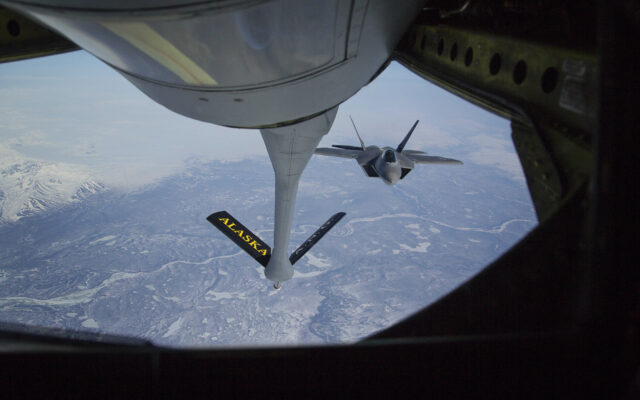The Submarine Crew From The USS Alaska Are Visiting Anchorage


This week, you’re going to see something you don’t normally see around here: U.S. Navy Submarine Sailors. Sailors from the Ohio-class ballistic-missile submarine USS Alaska (SSBN 732), homeported in Kings Bay, GA, are visiting their submarine’s namesake state.
Seeing a submariner is a rare and privileged opportunity. Just eight percent of Navy personnel are submariners. Because of the highly technical and demanding nature of submarine duty, the Navy only selects the highest performing recruits and officers.
This is your chance to share your stories with the crew about what makes living in Alaska so special. Feel free to ask the Sailors about Navy life above and below the surface of the ocean.
Submarine forces provide an asset unequalled by any other military service. We are on scene: operating independently and dangerously close to our adversaries for a quicker and more accurate threat response. We are unseen: continuously patrolling the oceans, submerged for weeks and months at a time, completely undetectable. The Submarine Force provides vital intelligence information, by using undersea concealment, in support of U. S. national interests in the variety of contests that characterize today’s unstable international environment. The Submarine Force also provides the survivable leg of our nation’s nuclear arsenal. Our submarine is one of 14 ballistic-missile submarines in the Navy’s fleet, tasked with the nation’s number one Department of Defense mission of strategic deterrence.
Submariners also have the enormous responsibility for conflict deterrence, using undersea advantages to provide a survivable strategic deterrent and a robust conventional capability to prevent both nuclear and conventional conflict.
The Submarine Force operates where and when they are needed and, if necessary, can use their undersea capabilities to strike targets, conduct theater and unit-level anti-submarine or anti-surface warfare, and perform other warfighting missions across multiple domains.
Our submarine is the fourth U.S. Navy vessel to be commissioned with the state’s name. The first USS Alaska, was a wooden-hulled screw sloop of war built at the Boston Navy Yard, commissioned in 1896. The second was a 229 gross-ton steam fishing vessel, operating as a minesweeper and patrol vessel, it served in the Charleston, S.C, area during the remaining weeks of World War I and was returned to its owners in 1919. The third USS Alaska was the first 27,700-ton Alaska-class large cruiser, commissioned in 1944. It was heavily involved in the Pacific region during World War II, providing anti-aircraft protection for the aircraft carriers during raids on the Japanese home islands and during the Okinawa campaign.
The submarine Alaska is part of the Navy’s mission to provide a credible nuclear force, deterring aggression and providing assurance for our allies and partners. Commissioned in 1986, USS Alaska has served the nation for 34 years and is projected to remain in service well past 2020. At 18,000 tons, Alaska is capable of carrying 20 Trident D5 missiles. USS Alaska has accomplished many first throughout her time in service. Most recently Alaska, was the first submarine to complete 100 strategic deterrent patrols.
The Navy employs approximately 300 proud Alaskans, including both active duty and military civilians. Behm Canal near Ketchikan, Alaska, is home to the Southeast Alaska Acoustic Measurement Facility (SEAFAC). The Navy’s only West Coast asset for making high fidelity passive acoustic measurements. As the Navy’s primary acoustic measurement facility in the Pacific, SEAFAC provides the capability to monitor the acoustic health of our Submarine Force ensuring our stealth. Alaska has given much more to the Navy and the military. Over 13 percent of Alaska’s population are veterans. Additionally, one Alaska citizen has been awarded the Congressional Medal of Honor, our nation’s highest military honor.
USS Alaska was commissioned in 1986 and will proudly serve our nation and represent her namesake state for nearly 40 years. We look forward to building a relationship with the people of Alaska that will persist long after the crew has moved on and the submarine has been decommissioned. Kodiak tough, Kodiak pride!
Cmdr. Eric Cole is the Commanding Officer of the U.S. Navy submarine, USS ALAKSA (SSBN 732) (GOLD) and is overseeing the Navy’s visit to Alaska November 10-16.
You Might Also Like



